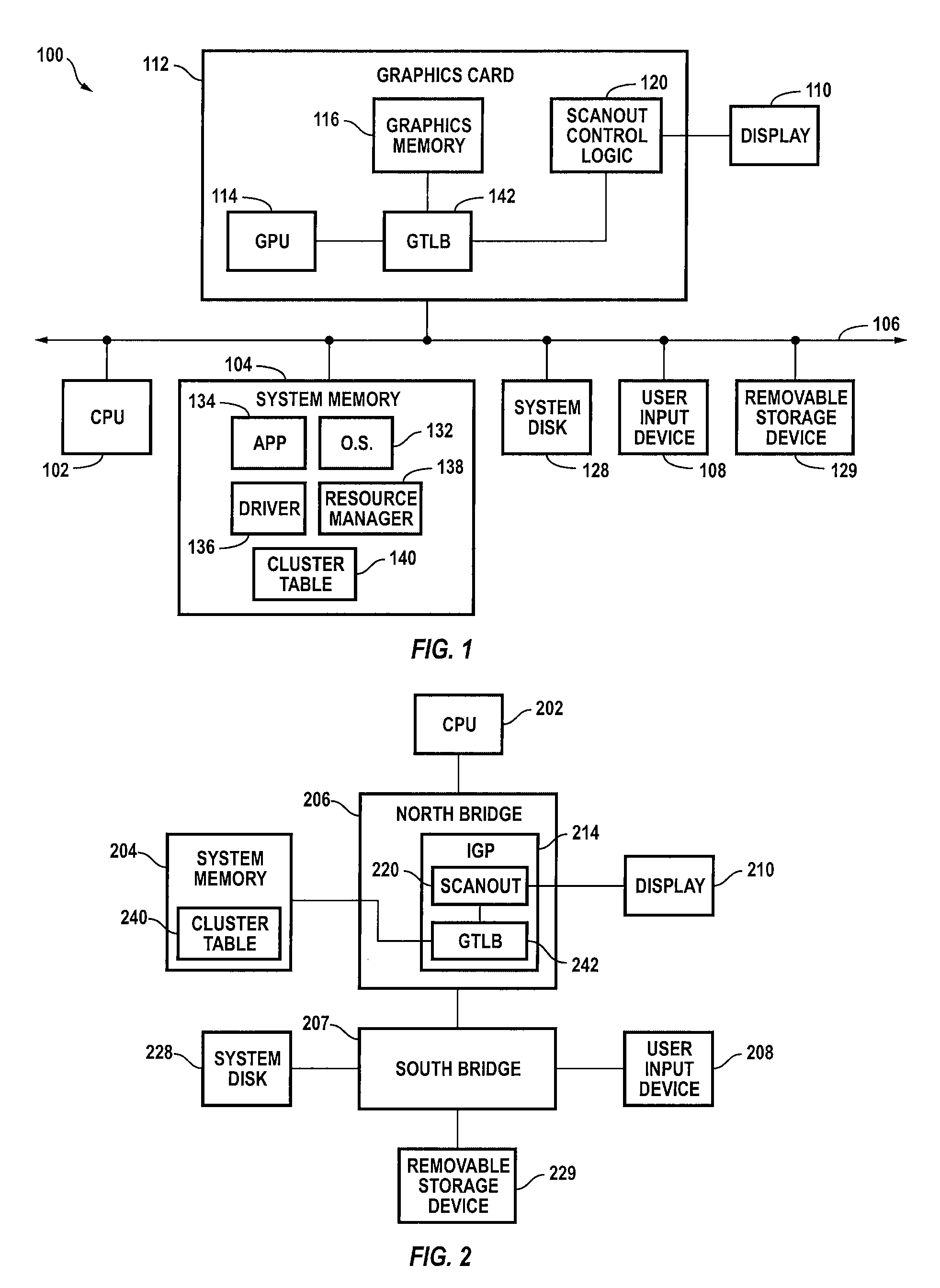Multi-client virtual address translation system with translation units of variable-range size
a translation system and multi-client technology, applied in the field of memory management systems, can solve the problems of inability to guarantee that a process will receive memory resources, inability to provide gart or any other address translation functionality, and inability to control the physical arrangement or address mapping of the system memory allocated by igp, etc., to achieve the effect of reducing the number of page table accesses
- Summary
- Abstract
- Description
- Claims
- Application Information
AI Technical Summary
Benefits of technology
Problems solved by technology
Method used
Image
Examples
Embodiment Construction
[0043]Embodiments of the present invention provide systems and methods for implementing a virtual address translation table and an on-chip address cache that can substantially reduce the number of page table accesses needed to translate a given range of virtual addresses to physical addresses. Address translation information is provided using a translation data structure, referred to herein as a “cluster,” that is associated with some range of virtual addresses; the cluster can be used to translate any virtual address in its range to a physical address. The sizes of the ranges covered by (or mapped by) different clusters may be different, and in some embodiments, the size of the cluster data structure is independent of its range size. For example, in one embodiment, each cluster is 16 bytes and can map anywhere from 4 to 512 pages of the virtual address space. Clusters may be stored in an address translation table (e.g., in system memory) that is indexed by virtual address so that, ...
PUM
 Login to View More
Login to View More Abstract
Description
Claims
Application Information
 Login to View More
Login to View More - R&D
- Intellectual Property
- Life Sciences
- Materials
- Tech Scout
- Unparalleled Data Quality
- Higher Quality Content
- 60% Fewer Hallucinations
Browse by: Latest US Patents, China's latest patents, Technical Efficacy Thesaurus, Application Domain, Technology Topic, Popular Technical Reports.
© 2025 PatSnap. All rights reserved.Legal|Privacy policy|Modern Slavery Act Transparency Statement|Sitemap|About US| Contact US: help@patsnap.com



